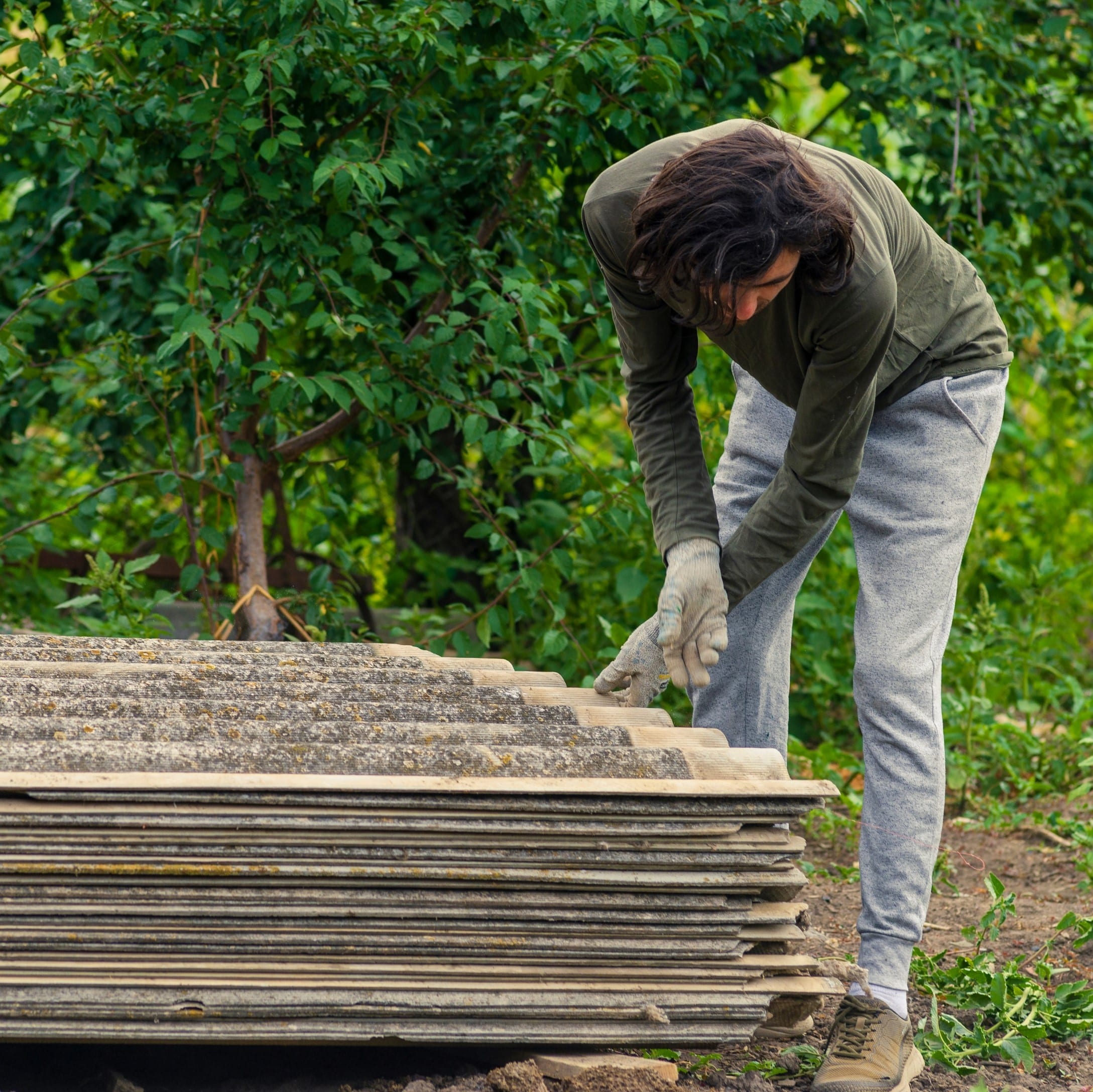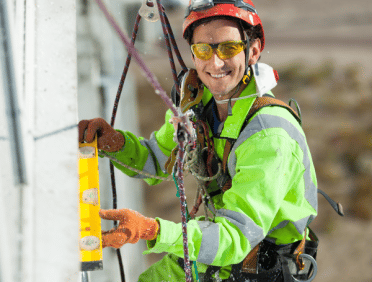The importance of understanding the health threats posed by asbestos in the UK
Not so long ago asbestos was a material that was used in a variety of building and construction works. This was largely due to the flexibility that it gave and the variety of things that it could be used for.
Whilst it was an incredibly useful material, many years later it was discovered that asbestos is dangerous and poses a danger to the health of anyone who is exposed to it, particularly those who are exposed to it regularly and for extended periods.
But what are the health risks associated with asbestos and what can they mean for those who are exposed to it?
Health Risks Associated with Asbestos Exposure
Asbestos is linked to a variety of health issues, largely those that are linked to the respiratory system. Whilst some of them can be picked up shortly after being exposed to it; others take as much as 30 years to become apparent and lead to a diagnosis. Let’s take a look in more detail about how health problems can be caused by asbestos.
How asbestos fibres can cause severe health problems
Asbestos is made up of tiny fibres which, when the asbestos materials are damaged or become worn over time, are released into the air. These fibres are flexible and incredibly fine (part of the reason why asbestos became such a popular material in building and construction in the first place).
However, this is the exact reason why they are incredibly dangerous to people. These fibres will make their way into the air around the person and they will then breathe them in. The fibres will then get stuck in their lungs, which irritates them, along with a variety of health problems too.
Common diseases linked to asbestos exposure, such as mesothelioma and lung cancer
Several different diseases and health issues can be linked to asbestos exposure. The first is asbestosis, this is scarring that is found in the lungs. It is caused by the fibres being breathed in and damaging and irritating the delicate lung tissue.
When your lungs are scarred you will find that it is harder for both oxygen and carbon dioxide to move in and out, which, in turn, makes breathing much harder. It is most likely that you will develop asbestosis if you have been exposed to asbestos at a high level and that this has carried on over a long period. However, it is worth noting that many years can pass by before you even begin to develop any symptoms.
You may also be likely to develop pleural disease, this is a lung condition that is not cancerous, however, it does cause changes in the membranes that surround the lungs and the rest of the lung cavity.
If you have pleural disease then the membrane will become thicker, this could be all over the lung cavity or it could be in isolated spots. You may also find that fluid builds up around the lungs.
Lung cancer is another health issue that can be linked to asbestos. With lung cancer you may find that tumours develop in your lungs, these can block the passages that carry air in and out. It is important to recognise that lung cancer can also be caused by several other factors.
However, a form of cancer that is linked to asbestos directly is mesothelioma. This is a rare cancer that is found in the membranes of the lungs and the chest cavity. It can also move into the abdominal cavity and even surround other organs in your body too. It is thought that you may not see signs of this cancer until at least 30 years after you have first been exposed to asbestos.
The prevalence of asbestos-related diseases in the UK
It is thought that there are as many as 5,000 asbestos-related deaths in the UK every year. The largest percentage of this is linked to mesothelioma cancer.
Asbestos Regulations and Guidelines in the UK
To keep people who are working with, or could be exposed to asbestos safe, the HSE developed several regulations and guidelines that relate throughout the UK. Whilst not everyone needs to know these regulations inside out, it is always worthwhile ensuring that anyone who could be at risk of asbestos exposure, has an idea of what they contain.
The Control of Asbestos Regulations 2012
As the name suggests, the Control of Asbestos Regulations 2012 are there to ensure that the risks that are associated with asbestos are identified and then properly managed. They were created by the Health and Safety Executive and any business owner or person in charge of a building, needs to be aware of what they contain and how the regulations could relate to them.
The duty to manage asbestos in non-domestic premises
One of the key aspects of the regulations is that it looks at the duty to manage asbestos in non-domestic premises. This means that it is down to someone within that building to be in charge and take the duty of managing asbestos.
This may be the owner of the business, the premises or someone who has a managerial role within the building. They should be aware of the key risks that can come with asbestos and have plans in place for what they will want to do to minimise and mitigate this risk as much as possible.
Asbestos removal and disposal guidelines
As well as managing the chance of exposure when asbestos is in the building, it is also important to follow the guidelines for the removal and disposal of asbestos too. Especially since there is a definite risk of there being exposure at this point too.
Depending on the circumstances, there is a good chance that the asbestos will need to be handled and transported by a licensed company that can handle asbestos. They will know the right procedures to follow and ensure that the asbestos materials end up in a licensed disposal site.
Asbestos needs to be handled in the right way, it is recommended that it is wet when it is moved because this will help to reduce the number of fibres that make their way into the air. It is also recommended that it is double bagged, in particular bags, as this, again, will limit just how much asbestos fibres are released into the air (and then are at risk of being breathed in).
Identifying and Managing Asbestos in Buildings
Considering how asbestos is usually combined with other materials, it can be tricky to properly identify it within a building. However, one thing that is important to know about asbestos and spotting it, is to always be cautious, it is much better to be safe than to be sorry, which means that you are going to want to take steps to identify and manage asbestos in buildings as best that you can.
Asbestos surveys and assessments
The initial thing to do is to carry out an asbestos survey and assessments. These will ascertain where the asbestos is most likely to be and what the chances are that it will be there. It will also consider the amount of asbestos and how much of a risk it is likely to be.
These surveys will a so need to consider the condition of the asbestos and how long it may stay that way.
Types of asbestos-containing materials commonly found in buildings
As we have already mentioned, asbestos is usually mixed with other materials for it to be used in buildings, which makes it all the harder to spot it. However, some key materials are likely to contain at least some form of asbestos in it.
These are:
• Lagging
• Sprayed coatings
• Insulating boards
• Textured ceilings
• Cement
• Roofing Felt
It is also possible to find asbestos in Artex. You can find out more on how to tell if artex contains asbestos in the www.smartasbestos.co.uk blog by clicking here.
It is always best to assume that these may have asbestos in them to ensure that everyone is safe around them.
Steps for conducting an asbestos survey and creating a management plan
It is important to make sure that an asbestos survey that you carry out is detailed and moves through all the relevant steps.
The first thing is to find out if any materials in the building or area contain asbestos. You may be able to find out from the age of the building whether or not asbestos was used. Anything that is built after the 2000s, should not have asbestos in it. Anything before that, particularly buildings built in the 1960s-1980s are likely to have some form of asbestos within them.
Next, once you have identified the places where the asbestos is likely to be, you need to keep a record of where this is. You also want to look at the condition that the asbestos materials are in, they must be in the best condition as they get older and worn, as they are more likely to release the fibres into the air. This is an ongoing document and should be updated regularly.
Once you have this information, then you can start to prepare a plan. This will go through the key risks that are posed to people and how you are going to manage and reduce them. Again, this is a document that is likely to change and grows with time, particularly as the condition of the asbestos changes over time and the risks begin to grow with it.
Another part of your plan should be to deliver training and increase awareness of asbestos safety to those who need it. This should be delivered regularly, as things do change and also people do start to forget things too.
Safe Handling and Removal of Asbestos
One of the biggest risks when it comes to asbestos is when it is removed and disposed of. This means that it is important to ensure that asbestos is handled in a way that is safe and that those who handle it are as protected as possible too.
Personal protective equipment (PPE) and safe work practices
The first thing that you should do is ensure that everyone who handles asbestos wears the correct level of PPE. PPE is there to protect people, which means that it should be provided and your staff should be aware of the reasons to wear it.
When it comes to asbestos, PPE will usually be respiratory, this will help the person to be able to breathe but will stop or reduce the amount of asbestos fibres that can be breathed in.
It is also important that you ensure that workers are aware of safe working practices and what is expected of them. This could be as simple as what to do if they identify asbestos and also the PPE that they should be wearing to protect themselves.
Steps for safely removing asbestos-containing materials
The majority of asbestos removal and handling will be completed by a licenced company, as they are certified to handle asbestos. However, this is not always the case and there are some times when it can be handled by those who are not licensed.
In this case, those who are handling the asbestos need to do so in a way that is safe and keeps them as protected as possible.
The first step is to remove the asbestos and wet the materials, this will reduce the amount of fibres that are released when they are moved around. The waste materials then need to be double-bagged in sealed waste sacks that are approved to hold asbestos.
It then needs to be taken to a disposal site that is approved to handle asbestos. The area that it has been removed from needs to be cleaned, which will ensure that the residue of asbestos and any debris is removed and reduces the risk.
Importance of hiring licenced asbestos removal contractors
Whilst there are some circumstances when asbestos can be removed by someone who does not hold a license, it is worth noting that it is always recommended that a licensed contractor manages asbestos.
The reason for this is that they know what needs to happen and the key regulations that need to be followed. They are experts in dealing with asbestos and will do so in a way that is safe and will reduce the risk of exposure too.
Asbestos-related Health and Safety Resources in the UK
As asbestos can be so dangerous when it is not handled properly, it makes sense that it will be important to know the key health and safety resources that relate to asbestos here in the UK.
Government agencies and organisations providing information and support
The best place for information and support is the Health and Safety Executive. They are who has created the regulations and guidance in handling asbestos and will be able to advise you on the best thing to do if you come across or suspect asbestos.
You may also find that you can ask any questions that you may have to your local authority, or, if you have a local asbestos specialist, then you may be able to ask them for their help.
Importance of regular health check-ups for individuals with asbestos exposure history
The symptoms and signs of asbestos exposure can take some time to develop and show. This means that it is important that anyone who has been exposed to asbestos in their life, particularly those who have a history of it occurring several times or for long periods, have regular medical checkups.
These will ascertain whether or not there have been any developments or whether there are any signs of damage at all. Picking these diseases and conditions up early can make the difference between the treatments and the outcomes that the person can have in the future.
Asbestos Awareness and Training
One of the best ways to protect people against the risks that come with asbestos exposure is to ensure that they understand what they need to do and what they need to be aware of. This can come in the form of training, even at a basic level, which will help them to understand what can and does happen.
Asbestos awareness for workers in at-risk industries
Anyone who is at risk of asbestos exposure in their workplace must have an awareness of what asbestos can do and the risks that it poses to people too. This doesn’t, depending on the nature of the work that they do, have to be too in-depth as they may not ever come across it, but it does need to give an overview of the key aspects of asbestos and its exposure.
Training requirements for employees who may encounter asbestos
The next level of training is likely to be offered to those who are most at risk of encountering asbestos in their work. They will not only need to be aware of the basics, but they will need to have in-depth training in how to handle asbestos safely.
This training is likely to need to be repeated regularly to refresh the information and knowledge that they have.
To see Learn Q’s asbestos training click here.
Raising awareness among the general public
Whilst the majority of people who are going to be exposed to asbestos will be those who work closely with it, there is always a chance that the general public could also be exposed to asbestos.
This is why it is a good idea to encourage everyone to have some level of awareness and know what to do to keep themselves safe from asbestos exposure and the possible risks that it causes to health.
Training on asbestos awareness
If you want to make sure that you are as safe as possible when you come across asbestos or you undertake work with asbestos; then the best way that you can do this is to have training on asbestos awareness.
Asbestos Awareness Certificate
If you have asbestos awareness training, then you obtain an Asbestos Awareness Certificate so that you can show that you have had the training and that you understand some of the key information that links to working with asbestos.
You can take an Asbestos Awareness course (£17.50), gain a certificate and ensure your team are compliant by clicking here.
Alternatively, you can access our money saving bundles to save over 50% by taking two or more courses.












